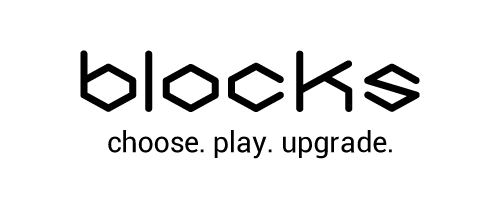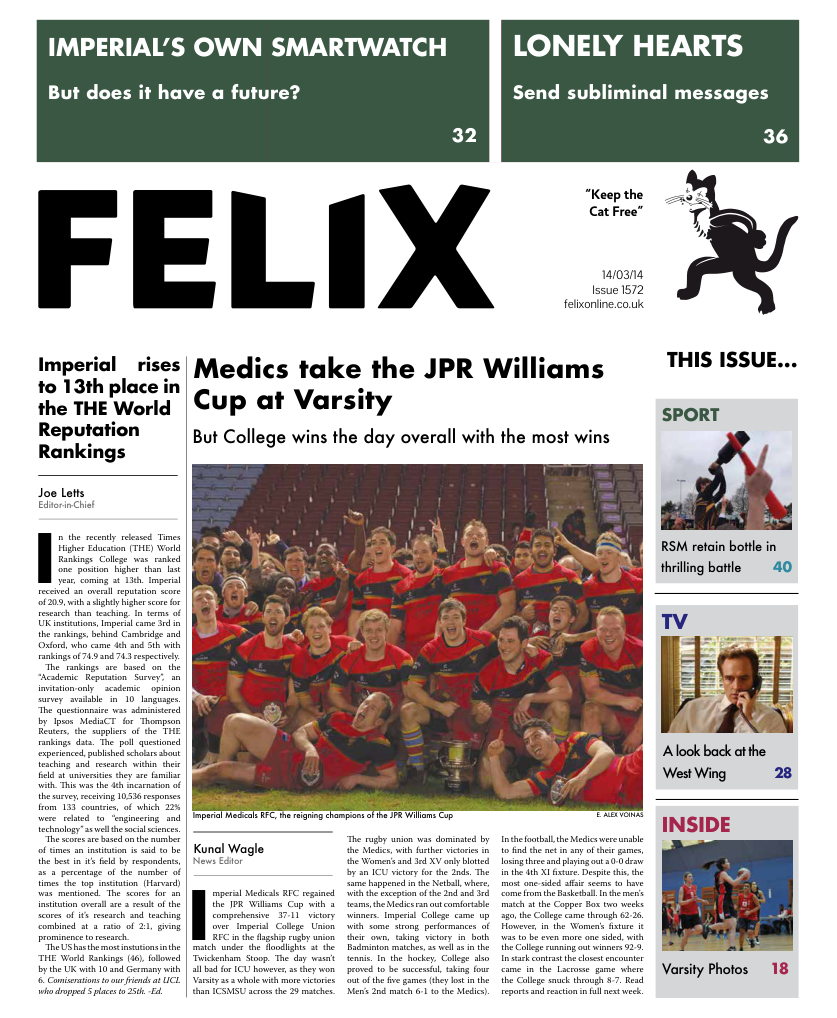Imperial’s own smartwatch
A few of months ago a couple of Imperial College students set out on an adventure to create the world’s most versatile smartwatch – BLOCKS.

A few of months ago a couple of Imperial College students set out on an adventure to create the world’s most versatile smartwatch – BLOCKS. Since then the team, expanded to 8 people, entered Imperial Create Lab’s £20,000 challenge and are getting ready to “Pitch at St James’ Palace” event in April. But is there really a market for smartwatches, or are they just another caprice of the geekworld that will whizz past the mainstream?
Exactly a year ago Felix published an article with the title “Revolution: Wearable Technology”. It was a risky claim to make. Google Glass had just been released to developers and Pebble smartwatch entered production a month earlier. Everything else was just a rumour.
Today, it is difficult to ignore the fact that wearable devices dominate the tech news. Not only because it was the highlight of the world’s largest technology show, the Consumer Electronics Show 2014, but more importantly because papers such as The Economist and the FT are picking things up on it too. That surely means - the word is out.
You may still wonder what a smartwatch can really do. Just like smartphones changed our perception of telephones, smartwatches could change our idea of a classic watch. By providing live access to all kinds of information, they will bring more convenience to our lives and make us more productive. You may find it difficult to chat with it on Facebook, yet your smartwatch will show notifications for emails, texts or important news. Each time you can decide whether it is something important and reach for the phone, or ignore it until later. More than anything, smartwatches will allow us to stay informed without interrupting our work, studies and meetings with friends.
The very first of these devices was Pebble. A spin out from a crowdfunding campaign on Kickstarter, it vouched for a simple, battery saving E-ink display, mechanical buttons and a full capability to connect to one’s smartphone. We then saw the entry of electronics giants into the market, Sony and Samsung, which offered more powerful devices with capacitative touchscreens, speedier processors and a large choice of apps. As of 2014, there are at least a dozen of large companies that have either already released a smartwatch, or are openly working towards one.
However, the potential of smart digital timepieces doesn’t stop with phone connectivity at all. As they are located so conveniently on the wrist that many have realized that these can be used for sports. Imagine going for a run in Hyde Park and using a GPS sensor to track your route, pace and lap times. With an added heart rate monitor you could also measure your cardiovascular performance and learn how to pace yourself correctly. In fact, smart bracelets come in many varieties and shapes as demands vary. A few, such as the trendy Nike Fuelband, or the super thin Jawbone, chose to fit an activity tracker that could log the steps that we do in a day, or measure the swing of a tennis racket, for example.
For tech lovers, there has been a lot of hype for gadgets with gesture and voice recognition. With a lack of a fully sized keyboard it may well be the perfect place for use of these technologies. Kreyos, another smartwatch that raised a substantial amount through crowdfunding, offers exactly that. Finally, there are variants of smartwatches that are mini-mobiles in their own right, such as the Neptune Pine.
The trouble with smartwatches is that no one really knows yet what kind of features will win in the end. It may well be the reason why Apple has held out for such a long time. While some may prefer to replace their mobile with a Neptune Pine, others find it totally unnecessary and a drain on the battery. Many will avoid the nerdy looking watches, and go for something that includes a classic design with a small notification screen. One could argue that putting a device to wear on the wrist on a daily basis is a much stronger statement of style than a choice of a phone. Even when Apple release the much anticipated iWatch, that no doubt will look fantastic, we would think twice before choosing to wear it with thousands of others around us doing the same. Customization of style and features may be the most important factors for a smartwatch.
Customization is the core idea behind BLOCKS. Platforms saw a lot of success in the recent years - from Firefox add-ons to Arduino’s hardware design, Apple’s App Store to Coursera’s educational courses. Phonebloks was a designer’s concept for a modular phone released in November 2013. It proved so popular across social media that it was incubated with what is now Project Ara at Google. If modularity is so appealing for a smartphone, how much more important it would be for a smartwatch, with access to body specific information and significant constraints to size?
BLOCKS is building a platform for wearable technology. The idea is to offer modularity not only to software but to hardware and design. The great thing about BLOCKS is that anyone can choose a combination that they want, and make a unique device that suits their lifestyle. Each block easily connects to another, forming a wrist worn device. One could choose between blocks such GPS, heart rate, gesture recognition, temperature, altitude, microphone, RFID and many others. Similarly, the display will come in different variants such as LED, E-Ink or a touchscreen. Users can start with a few basic features with dummy blocks that complete the wristband, and replace them with new functional blocks over time. New items and upgrades would be available from the Blocks Store. Design will offer users materials such different types of plastic, metal and even wood variants. BLOCKS does not need to be constrained to the wrist and with help of a few dummy blocks it could become an armband, or more. Runners could snap a music block to it, plug headphones and to take it along to training.
As BLOCKS is based on an open platform, any company or an individual is able to build their own blocks. This opens the floor to researchers and tech companies to build more experimental pieces. For example, advanced gesture recognition blocks based on MMG sensors, transdermal patches for measuring blood glucose levels and electrolyte balance, or galvanized skin response blocks for measuring psychological and physiological stress levels. There are countless other technologies which would never find a place inside a non-modular smartwatch, but could be easily added to BLOCKS.
BLOCKS is currently building its first functional prototype based on an ARM processor and 3D printing the casing at the Imperial Robotics Labs.
Wearable technology is only just blooming and new smartwatches are rapidly entering the market. Our customizable, open platform will allow us to offer the latest blocks without having to redesign a whole new device, and enables our customers to always have the latest technology.






